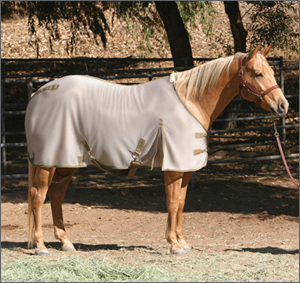Last week I had to say goodbye to an old friend, my 27-year-old horse Strawberry, a Missouri Fox Trotter. He had colicked through the night on Wednesday, and, when I went out to feed him Thursday morning, I knew something wasn't right. He was always the one who would whinny at me when he saw me coming to remind me that feeding time was ten minutes ago or would knock on the barn doors to hurry me up in getting those doors open so he could get to his stall and eat. It was a bit irritating at times, but, boy, what I wouldn't do to hear those sounds again.
We had gotten Straw about twelve years ago when he was fifteen. We weren't sure that we wanted a horse that old, but, since my husband wasn't an avid rider and my sons were young at the time, we decided that an older, more experienced trail horse was what we needed. I decided to try him out at a local state park on the rainiest, coldest day possible. Nothing phased him through all of it, so right then I knew he would be a keeper. What I didn't know was how much of a true keeper he would turn out to be.
I was initially looking for a suitable horse for my husband, but when we got Straw home, my oldest son claimed him. Justin was six at the time and just starting to get into the horse scene. It wasn't long before Justin and Straw were quite the pair. They seemed to bond from the beginning. Straw would take Justin anywhere without a second thought and do anything he asked him to do.
Straw was the kind of horse that you could put anyone on and who was liked by all. Anyone could ride him, from our neighborhood girls to friends from our church, regardless of their level of experience. As he got older, though, we would definitely like to go on shorter rides and head to the barn. One time, my friend and I were riding down our road which requires crossing railroad tracks. Well, Straw decided he didn't want to go over the tracks but wanted to go back home to the other horses. He took off at a gallop; I couldn't believe it! My friend was laughing so hard that she couldn't stop him until he got to the gate at which time we switched horses and Strawberry had to do the ride over with me on his back. He wasn't too happy but went anyway. The girls who came over to ride would have to keep turning him away from the barn direction to keep him moving. He would like to mess with their heads a little, but that would help to make them better riders in the end.
He would also love to get extra grain or hay while traveling on our camping trips. He would work his body and head so that he could help himself to the hay. Each time we would think that surely we had moved it out of reach. He would just get bored or hungry and need something to eat. The last time Strawberry went to Brown County State Park he thought he needed a little extra to eat on the way home. We had gotten totes with different lids on them to keep the coons out of the feed while we were down there. We also thought that this would be a good way to keep Strawberry from helping himself when he got bored. Well, lo and behold, guess who found his way into the tote? Strawberry. Fortunately, after being gone for a week there wasn't much left in there to eat. He was so proud of himself and the other horses in there didn't think it was really fair. He was such a stinker at times, but that's what made us love him all the more and makes it that much more difficult to let him go.
Thursday afternoon we thought he might pull through, but by 7:30 that night he had taken a turn for the worse and we had to have the vet back out. After a muscle relaxer, mineral oil, and three pain killers throughout the day, the vet said there was nothing else to do. At that time it was evident that he had to be put down. He was in a lot of pain and not doing well at all. Surgery was out of the question because of his age. At that time, I knew I had done everything possible to keep him going but now I had to let him go.
He truly was an amazing animal. He was definitely loved and had a long good life. He has truly left a void in our lives, but, as my oldest said, "Let'r buck, Strawberry. You will be missed."
---By Linda Fish, one of our saddle experts





















